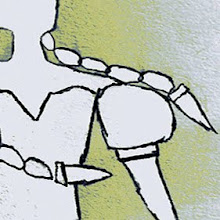American Robin with Dogwood (1978)
Roger Tory Peterson (1908–1996) was an American naturalist, ornithologist, artist and educator. He held to be one of the founding inspirations for the 20th century environmental movement.
In 1934 he published his seminal Guide to the Birds, the first modern field guide.
Since, looking at the outdoor world has never been the same. He gave the tools that once belonged only to the field biologist to the ordinary person, who could now easily learn about and understand the natural world.
Baltimore Orioles in Flowering Dogwood
He developed the Peterson Identification System. He is known for the clarity of both his illustrations of field guides and his delineation of relevant field marks.
« My identification system, explains Roger Tory Peterson, is visual rather than phylogenetic; it uses shape, pattern, and field marks in a comparative way. The phylogenetic order, which is related to evolution, is not emphasized within families. Similar-appearing species are placed together on plates and the critical distinctions are pointed out with little arrows.»
Paul R. Ehrlich, in The Birder's Handbook: A Field Guide to the Natural History of North American Birds (Fireside, 1988), said this about him:
« In this century, no one has done more to promote an interest in living creatures than Roger Tory Peterson, the inventor of the modern field guide.»
Barn Owls
His seventh grade teacher, Blanche Hornbeck, enrolled her students in the Junior Audubon Club, taught them about birds and often walked them to a nearby forest where she used nature to teach writing, art and science.
It was during that year on an April morning that Roger Tory Peterson had an experience that shaped the rest of his life.
While hiking with a friend, the boys spotted a seemingly lifeless clump of brown feathers on a tree, very low to the ground. Although merely sleeping, the boys thought the Northern Flicker was dead. Later, he described the experience:
« I poked it and it burst into color, with the red on the back of its head and the gold on its wing. It was the contrast, you see, between something I thought was dead and something so alive. Like a resurrection. I came to believe birds are the most vivid reflection of life. It made me aware of the world in which we live.»
Blue Jays with Autumn Oak Leaves (1976)
Breasted Grosbeaks (1978)
Cardinals with Multiflora Rose (1973)
Cinnamon Screech Owl
Common Snipe (incomplete watercolor, 1920s)
Florida Scrub Jays (1958)
Golden Eagle
Greenland Gyrfalcons (1979)
Northern Mockingbird Doing Wing Display (1978)
Peregrine Falcons (1986)
Puffins (1979)
The philosophy that I have worked under most of my life is that the serious study of natural history is an activity which has far-reaching effects in every aspect of a person's life. It ultimately makes people protective of the environment in a very committed way. It is my opinion that the study of natural history should be the primary avenue for creating environmentalists…
– Roger Tory Peterson














